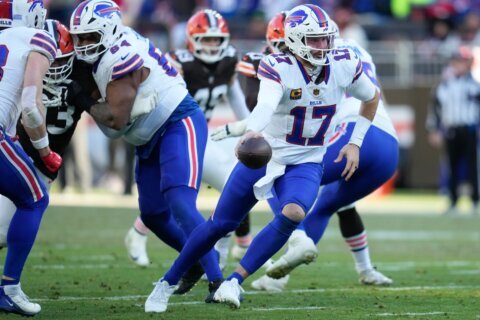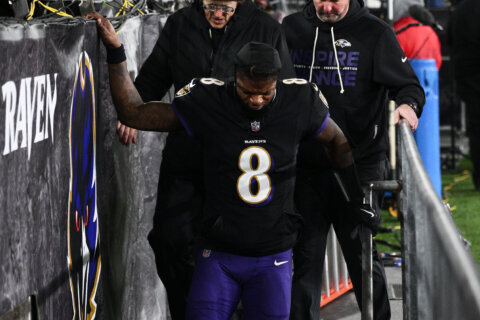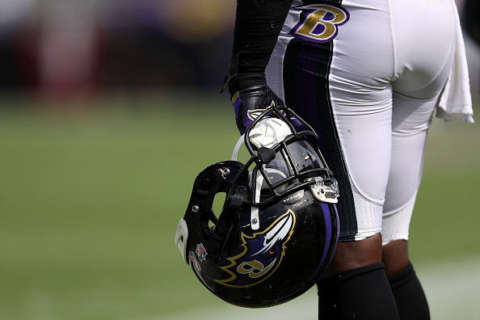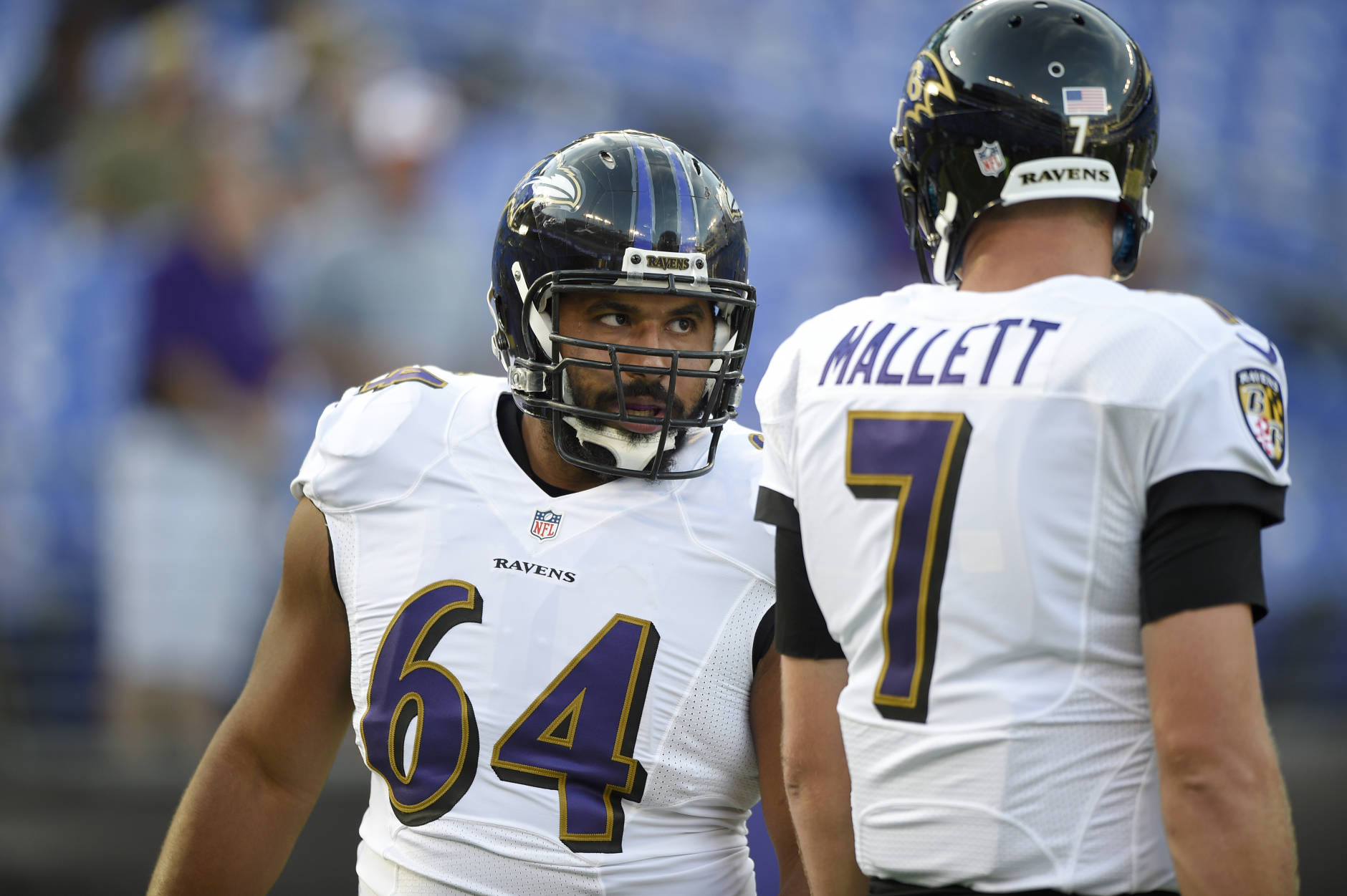
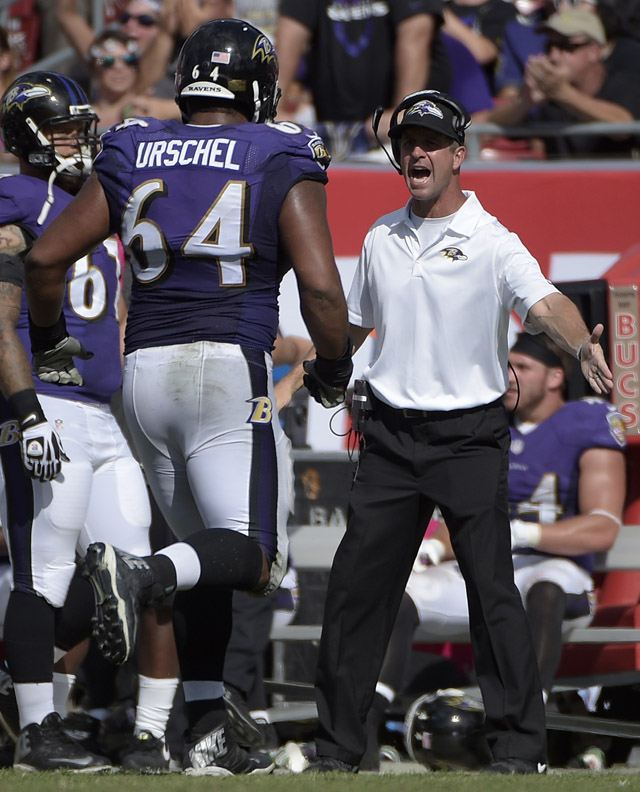
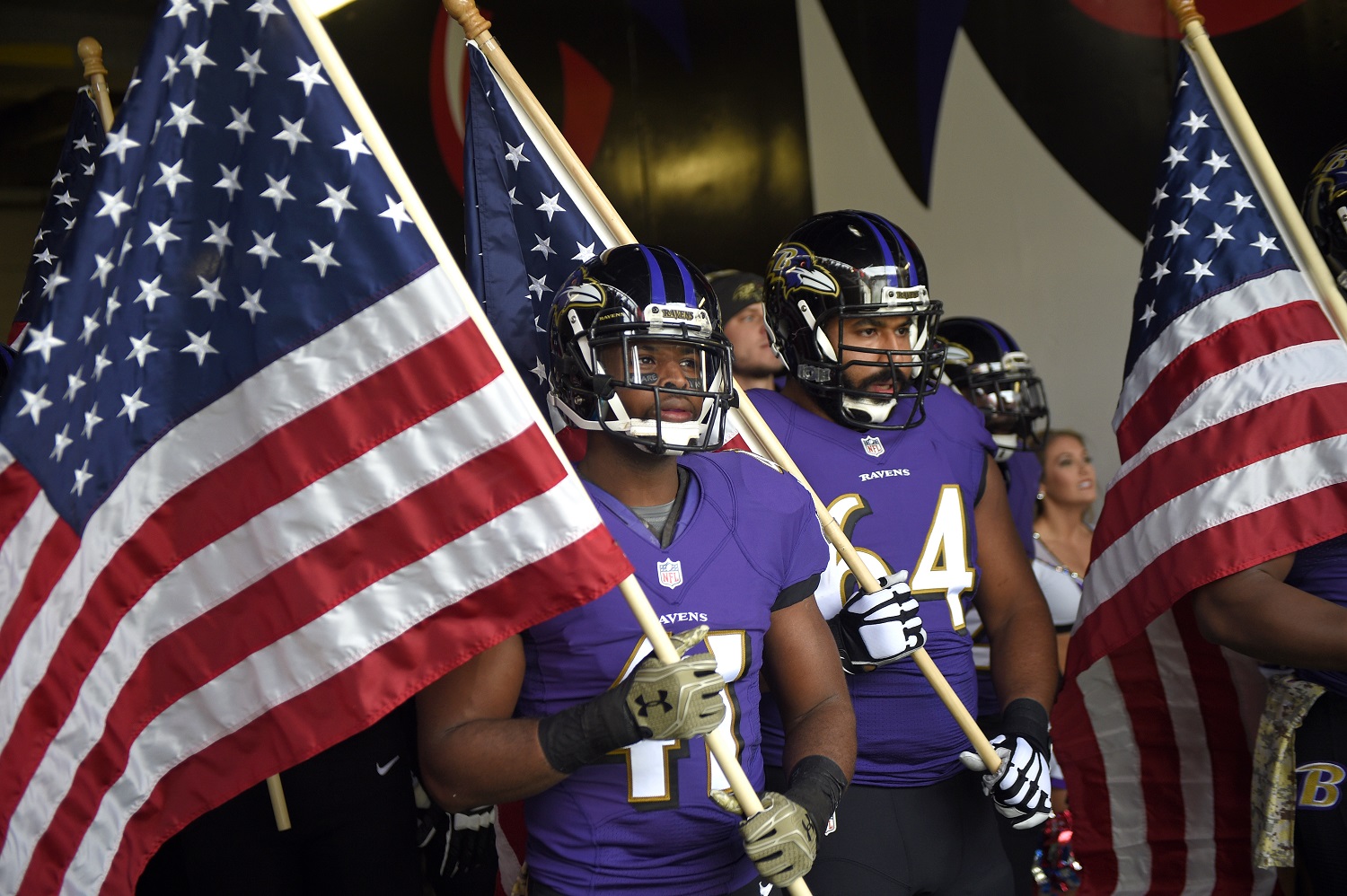
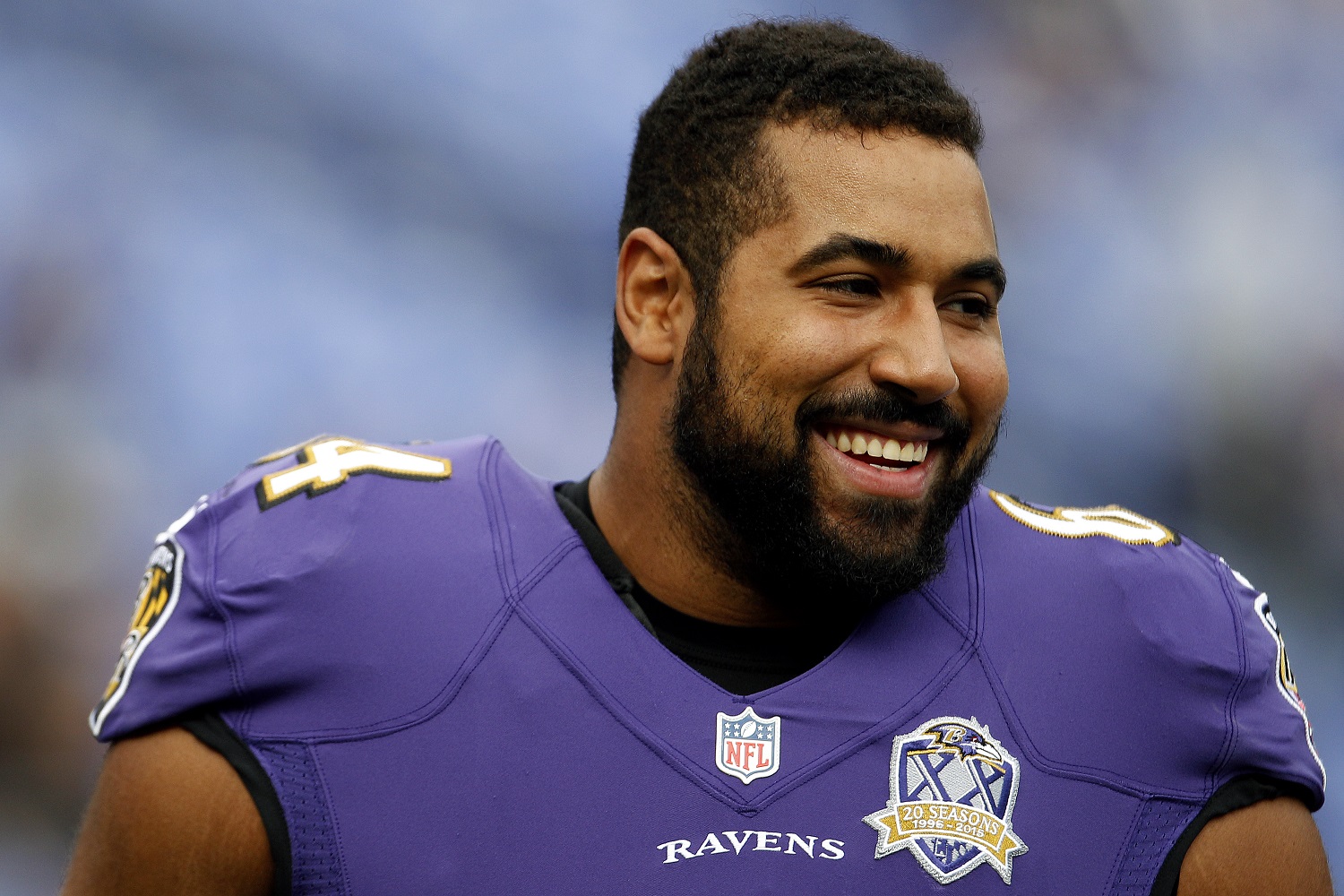
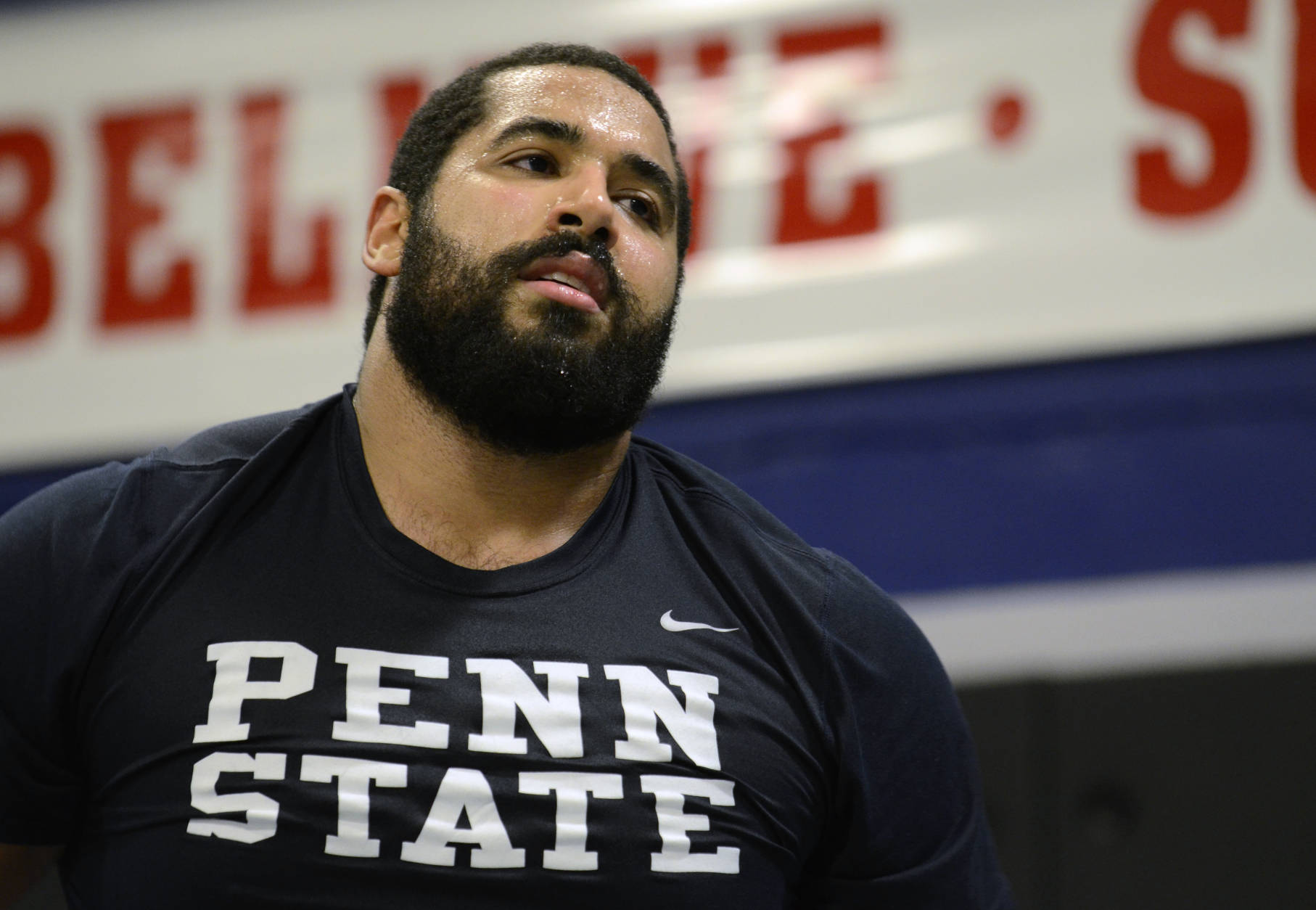
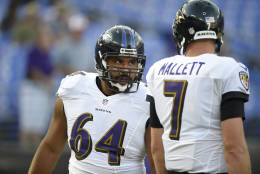
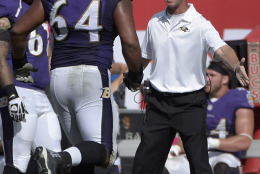
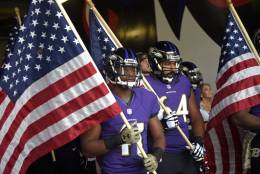
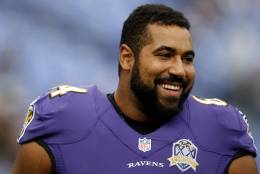
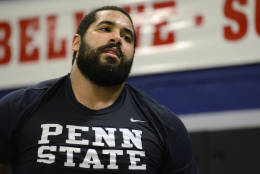
OWINGS MILLS, Md. — John Urschel doesn’t want to be unique.
Urschel, the 25-year-old Baltimore Ravens guard, is unquestionably different from your average offensive lineman, NFL player, or even professional athlete. You’d be hard-pressed to find any other roster in the pro sports world that includes a player pursuing a Ph.D. in mathematics at the Massachusetts Institute of Technology in the offseason.
If you’re a football fan, you probably have already been exposed to Urschel on some front. He’s been the subject of a steady tide of profiles over the past six months. He’s even landed endorsement deals based on his brain — explaining Bose sound-cancelling technology to a disinterested J.J. Watt — and a spot from the NFL itself in which he plays chess against an entire room full of children. (While Urschel’s chess skills are certainly above average, his 1601 US Chess Federation rating barely ranks him a Class B player, well below the 2200 minimum to be considered a master.)
The sportswriting world is recently fond of John Urschel thinkpieces, asking how it is that a man smart enough to be in an advanced theoretical math graduate program at a top school in the country could play professional football. They seem obsessed with the question of why he would put such a brain at risk by bashing it into that of his competitors, particularly given the ever-increasing trove of research connecting concussions and sub-concussive hits to crippling conditions like CTE.
It’s not that these questions are uninteresting. It’s just that they eventually become rote and repetitive. It’s not that Urschel doesn’t want to ask “why” — it’s that these “whys” have already been answered, as much as he cares to answer them at this point.
Urschel is always on the search for the next “why.” Or, in his case — and in the case of those he has tried to use his platform to reach — “why not?”
“I try to tell people that, you know, you don’t just have to focus on football; you don’t just have to focus on academics,” Urschel said after a recent practice at the Ravens’ practice facility. “It’s OK to be into multiple things. It’s OK not to fit into these little square pegs.”
If you’re looking for another symbol that reflects Urschel’s duality in higher education and the gridiron, look no further than the number on the front of his jersey.
Athletes often have personal reasons for their numbers. LeBron James wears 23, that of his childhood hero, Michael Jordan — both an homage and a public declaration of his own lofty expectations. Gilbert Arenas wore 0, the number of minutes people said he would play as a freshman in college at Arizona, a permanent reminder of the chip on his shoulder. Kevin Durant wears 35 to honor his first basketball coach, Charles Craig, who was shot and killed at that age.
Urschel? He wears 64, a perfectly normal number for an offensive lineman, but not one without its own, very personal meaning. Not only is 64 a perfect square (8×8), it’s also a perfect cube (4x4x4). It’s the only such number other than 0 or 1 that fits within the two-digit matrix of jersey numbers in the NFL, which probably wouldn’t fancy him sporting 729.
Considering the way he sees the world off the football field, it’s only natural that Urschel would take some of that mathematical, analytical perspective with him onto the gridiron, both while he plays and in his broad thinking about the sport.
“The biggest difference between football and basketball, or baseball as well — baseball has a lot of set pieces. Basketball [also] doesn’t have a whole lot of moving parts. You look at a basketball court, you’ve got 10 players and a ball,” he said. Then, his voice rises with excitement as his language begins to shift into his comfort zone.
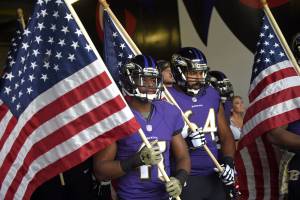
“In football, you’ve got 22 degrees of freedom, plus the football, and all of these rules, and different players playing these different positions. And then also, in basketball, they make great use of the tracking. Yes, we have this in football now, but NFL clubs are not making use of the actual visual tracking data, which I think is just a wealth of untapped potential.”
The natural question, then, becomes what a mind like Urschel’s might be able to do with all this information to further the future of football analytics. Could he be the Bill James of the football world, exploring the new frontier of advanced data analysis?
“I think about it sometimes; I toy with it sometimes,” he said. “I’ll get a data set on some things and I’ll try to do some sophisticated stuff. But mostly I don’t. Because, well, I hate to say it — but the things I do in math and computer science are a lot more fun than the math and computer science for football. It’s pretty, like, low-level stuff.”
In case you doubt Urschel, consider the program he’s enrolled in at MIT. His Ph.D. focuses on spectral graph theory, numerical linear algebra and machine learning. When I tell him that I have no idea what that means, but that my crack internet research leads me to believe it has something to do with the future of computer programming, his response is telling.
“I mean, that sounds about right based off the keywords,” he said. “I’ve very much taken to looking at these problems related to 21st century-type problems, but taking a theoretical approach. Less (as a) practitioner and more rigorously looking at things that are applicable in the 21st century related to big data, teaching computers how to make decisions for themselves, how to teach themselves, how to learn from data. Large-scale networks — these are the things that are of interest to me.”
Urschel isn’t the only professional athlete to have dipped his toe into academia. Upon his retirement, it was revealed that, while in college at Wake Forest, future NBA Hall of Famer Tim Duncan had co-authored a psychology paper entitled “Blowhards, Snobs, and Narcissists: Interpersonal Reactions to Excessive Egotism,” which encapsulates everything about Duncan’s humble personality and style of play in nine words. To glean more insight into Urschel’s motivations, it helps to look at his favorite academic paper, but not the one with which he is most often associated.
Urschel’s first credited paper was titled “A Cascadic Multigrid Algorithm for Computing the Fiedler Vector of Graph Laplacians.” The overly-technical title chock-full of big math words makes it an easy target. But Urschel’s favorite paper — “Spectral Bisection of Graphs and Connectedness” — better explains who he is and what he wants to do with his life.
“If you look at a network and you’re trying to, say, break the network into two parts, so that both parts are very connected and you minimize communication between the two parts, you can imagine applications being things such as VLSI design, parallel computing and many other things,” he said. “Well, it turns out that the minimum agon function of the laplacian on this network is a very good approximation to this problem, which is NP-hard, which means, it takes forever to solve exactly, and I proved connectedness results for the two subdomains.”
Got all that?
It all fits into those 21st-century problems he wants to tackle in his post-football career. It’s the type of work companies in the tech sector shell out top dollar for, but getting rich isn’t Urschel’s motivation. In the third season of a four-year, $2.36 million deal, he famously drives a 2013 Nissan hatchback rather than some flashy luxury car.
“There’s people who work for Google, who work for Amazon, and they do these sort of things to help Google push their company forward,” he said. “I care more about discovery for the sake of discovery, knowledge for the sake of knowledge, and trying to push the world forward in terms of what we know and the things we can do.”
He also cares about showing the next generation of student-athletes that it’s OK to be the smart one and the athletic one at the same time.
“In school, the sad thing is, the one that’s different is the one that gets left out in the cold,” he said.
He’s all too aware that in the schools he visits, young men see the glamour and allure of professional sports as the singular solution. And he knows how few of them will ever reach that goal.
“They see pro football players on TV making lots of money, professional basketball players on TV making lots of money, and they say, ‘Hey, this is my way out,’” he said. “And the problem is, they don’t see successful lawyers. They don’t see successful surgeons. They don’t see successful mathematicians.”
If Urschel can reach as many kids as he can while he is both a successful pro football player as well as a successful mathematician, he hopes that he can be a role model for that dual track of accomplishment, that maybe one day he won’t be the only one.
“I think the biggest thing I try to show is, no matter where you come from, how you grow up, if you focus on academics, you do well in academics, you will do well. I can assure you. And especially, to stress the statistics — you’ve got a much better chance of bettering yourself, and having a better life for your kids than you had, by focusing on academics.”
That might be the most important piece of math he can help them understand.

